If the Corsair iCUE is not showing or detecting fans, keyboard, or mouse, the solutions provided in this article will help you. With the help of Corsair iCUE software, you can manage devices like your gaming keyboard, gaming mouse, etc. But if it does not show any devices connected to your computer, you cannot manage those devices.
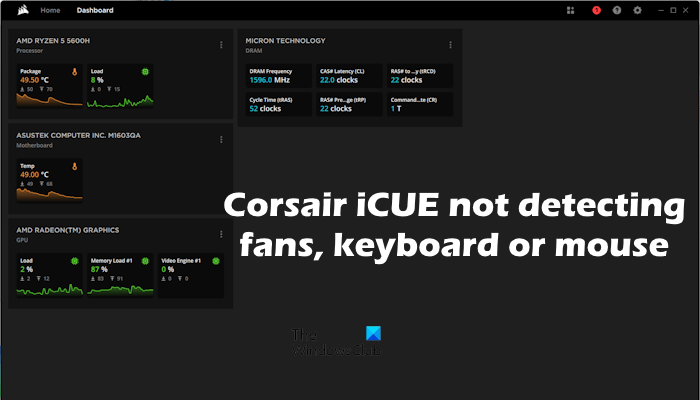
Fix Corsair iCUE not detecting fans, keyboard or mouse
According to the reports, Corsair iCUE software neither shows any device connected to the user’s computer systems nor displays any error message. If Corsair iCUE is not detecting fans, keyboard, or mouse, use the following suggestions to fix the problem.
- Preliminary fixes
- Troubleshoot in a Clean Boot state
- Repair Corsair iCUE
- Update BIOS and chipset drivers
- Delete or uninstall unnecessary plugins
- Uninstall and reinstall USB Controllers and USB Root Hub
- Disable USB Selective Suspend
- Completely uninstall and install Corsair iCUE
Below, we have explained all these fixes in detail.
1] Preliminary fixes
Before trying any other fix provided in this article, we suggest you try some preliminary fixes.
- If you have connected the devices through a USB Hub, we suggest you disconnect them from the USB Hub and connect them directly to your computer by inserting them into your computer’s USB ports.
- Disconnect the unrecognized USB device and then connect it again. See if Corsair iCUE shows that device this time.
- Use another USB port. Connect the affected USB device to all other available USB ports and see which one fixes the issue.
- We also suggest you check your USB device. Make sure that the device, say keyboard, mouse, etc., is working fine.
2] Troubleshoot in a Clean Boot state
Another third-party background application or service might be preventing Corsair iCUE software from working properly due to which it is not able to detect all the devices connected to your computer. To confirm this, start your computer in a Clean Boot state. To do this, you have to use MSConfig.
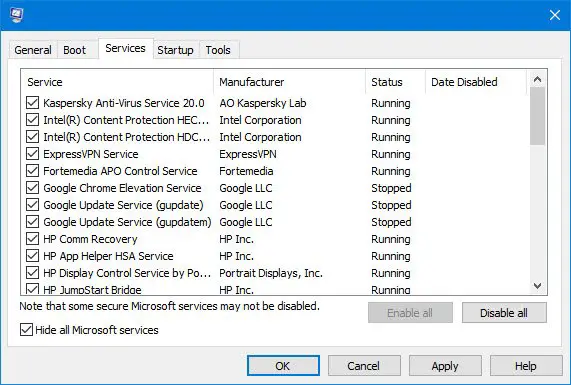
After booting your computer in a Clean Boot state, launch Corsair iCUE and see if it detects your devices this time. If yes, you need to uninstall another conflicting program. Usually, similar programs from other manufacturers conflict with Corsair iCUE. Hence, uninstall those programs. You can also identify the problematic third-party software by troubleshooting in the Clean Boot state.
3] Repair Corsair iCUE
Repair Corsair iCUE software to fix any minor bugs and issues. To do so, follow the steps provided below:
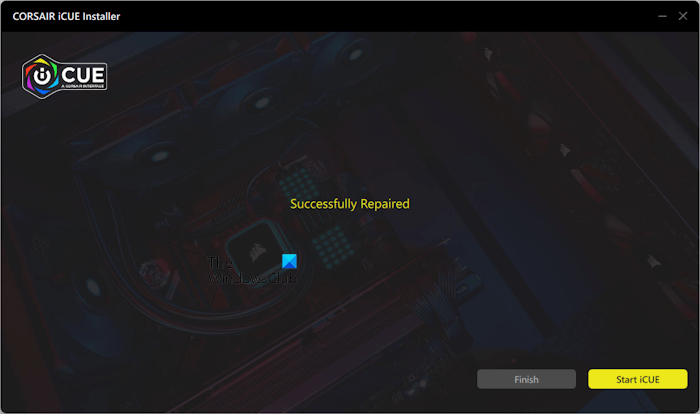
- Open your system Settings.
- Go to Apps > Installed apps.
- Locate the Corsair iCUE software.
- Once you find it, click on the three dots and select Modify. Click Yes in the UAC prompt.
Once you follow the steps written above, the Corsair iCUE software will enter repair mode. You will see the Successfully Repaired message when the repair process is completed.
4] Update BIOS and chipset drivers
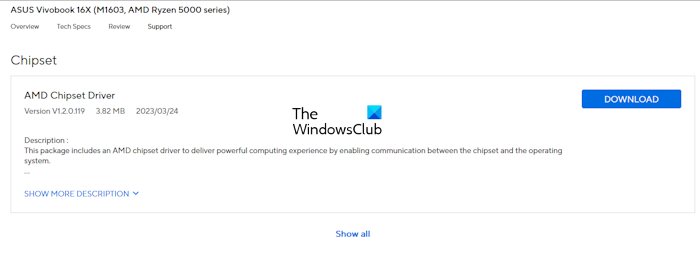
Updating BIOS and chipset drivers to the latest version can also help fix this issue. Visit the official website of your computer manufacturer and see if the latest version of your BIOS and chipset driver are available. If yes, download the update and install it.
5] Delete or uninstall unnecessary plugins
Corsair iCUE also allows users to install plugins. Sometimes, these plugins cause trouble and create issues with the Corsair iCUE software. We suggest you uninstall unnecessary plugins and see if it helps.
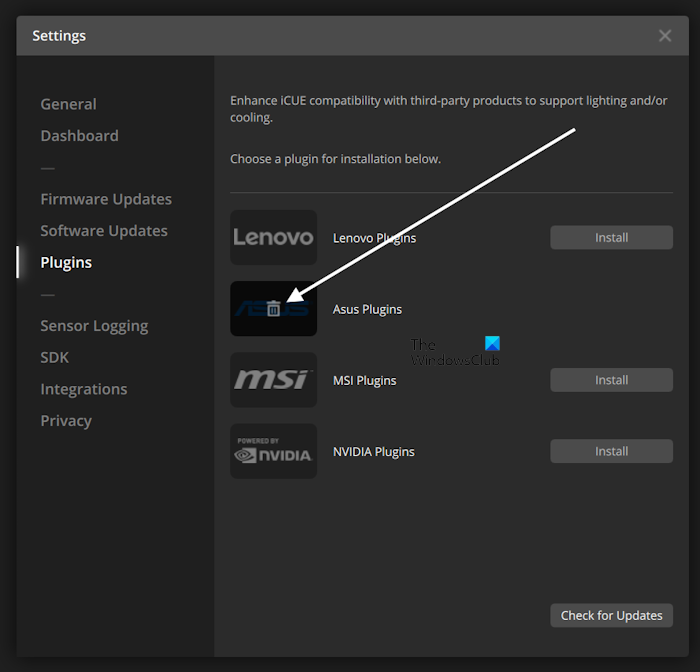
The following instructions will guide you on this:
- Open Corsair iCUE.
- Open its Settings.
- Select Plugins from the left side.
- Hover your mouse over the Plugin icon. You will see the Delete icon there. Click on it.
After deleting the installed plugins, restart Corsair iCUE and see if it shows the missing devices this time.
6] Uninstall and reinstall USB Controllers and USB Root Hub
If the issue still persists, uninstalling and reinstalling the USB Controllers and USB Root Hub can help. The steps to do this are as follows:
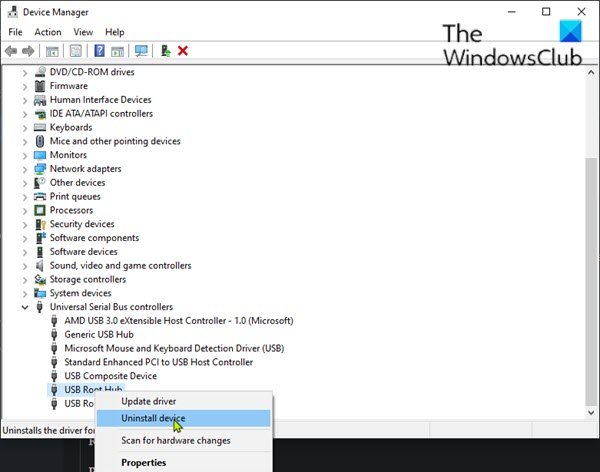
- Open the Device Manager.
- Expand the Universal Serial Bus controllers branch.
- Uninstall all the USB Host Controller drivers and USB Root Hub drivers. For this, right-click on them one by one and select Uninstall device.
After performing the above-mentioned steps, restart your computer. Windows will automatically install the missing drivers on restart. Now, check if the problem is fixed.
7] Disable USB Selective Suspend
The USB Selective Suspend feature in Windows 11/10 suspends the operation of the inactive USB ports without affecting the operation of the active USB ports. When Windows detects a USB port inactive for some time, it puts it in a low-power state by suspending it. The Selective Suspend feature helps conserve power in laptops. If you are a desktop user, you can disable this feature. Laptop users can also try this.
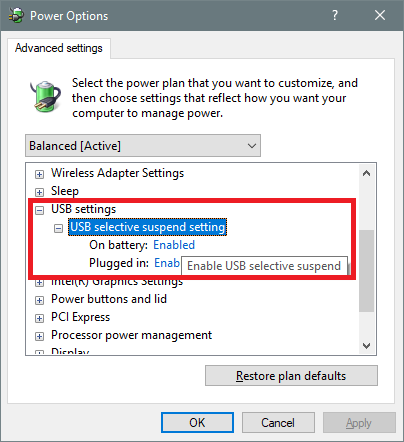
Disable the Selective Suspend feature and see if it helps. You can do so via the Control Panel. If your laptop is under the Modern Standby Mode S0, this feature will be unavailable to you.
8] Completely uninstall and install Corsair iCUE
If none of the above-mentioned fixes helps, we suggest you completely uninstall Corsair iCUE and install it again. To completely uninstall Corsair iCUE software, follow the steps provided below:
First, uninstall Corsair iCUE through the Control Panel or Windows 11/10 Settings. After uninstalling Corsair iCUE, delete the leftover files. Before you do that, open the Services Manager and look for any services related to the Corsair iCUE software. If you see any related services, delete them via the Administrator Command Prompt.
Open the elevated Command Prompt, type the following command, and hit Enter:
sc delete "name of the service"
Write the correct Service name under quotations in the above command. After deleting all the services related to the Corsair iCUE software, delete the leftover files.
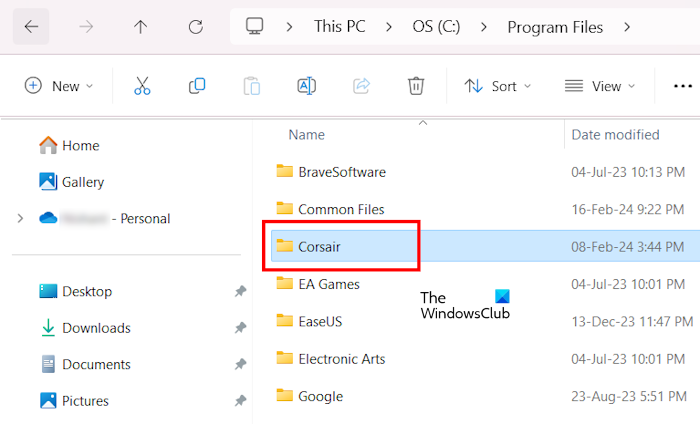
Open the C drive and then open the following folders:
- Program Files
- Program Files (x86)
- ProgramData
Delete the Corsair folders from all the above-mentioned folders. If you do not see the ProgramData folder, enable the hidden files and folders.
After completely uninstalling the Corsair iCUE software, restart your computer. Now, download the latest version of Corsair iCUE from its official website and install it.
That’s it. I hope this helps.
Read next: Corsair iCUE software not detecting RAM.
Corsair iCUE is not detecting devices
If the Corsair iCUE software is not detecting your devices, check if the devices are connected properly. Disconnect the affected devices and reconnect them. Also, make sure that Corsair iCUE is up to date. Sometimes, conflicting programs can also cause this issue. You can enter the Clean Boot state to check this. Lastly, completely remove the Corsair iCUE software from your system and then reinstall it.
How do you reset Corsair iCUE?
There is no option to reset Corsair iCUE. Instead of this, you can repair it. If you experience any issues with Corsair iCUE software, you can repair it via Windows 11/10 Settings.